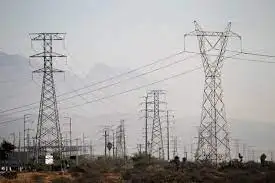Italy to achieve grid-pricing parity for solar energy
The country will be able to do this because of increased solar resources, the declining prices of photovoltaic solar modules, and hefty feed-in government tariffs and incentives.
According to industry experts, grid parity - the amount at which the cost of electricity produced from solar panels declines to the price of power produced from traditional sources - is likely to be attained by as early as 2010.
In a world of economic gloom, the solar industry in Italy is expected to be a ray of hope in the coming years. Italy is currently far behind European solar-power leaders Spain and Germany, having only 280 megawatts (MW) of installed photovoltaic capacity at the end of 2008 compared to Spain's 3,300 MW and Germany's 5,300 MW. However, estimates by the state power management authority Gestore dei Servizi Elettrici forecast that Italy's installed capacity could rise to over 900 MW by the end of 2009 and up to as much as 16,000 MW by 2020.
The Italian government introduced the most generous incentives in the world in February 2007, when it announced a feed-in tariff that would guarantee operators up to $0.63 for every kilowatt-hour (kWh) of solar power produced for the next 20 years. The new incentives, coupled with abundant sunshine, particularly in the central and southern areas of the country, as well as the declining prices of photovoltaic modules because of increased production, have led to about 34,000 new photovoltaic installations in Italy since the introduction of the new tariffs.
In contrast, only 2,500 installations were completed in the two years prior to the introduction of the incentives.
The current incentive plan has a limit of 1,200 MW of installed capacity with an extension of a further 14 months following the attainment of this target, which is expected to happen in 2010. The incentive plan for the period thereafter remains unclear.
In Spain, the number of new photovoltaic installations rose considerably following the introduction of an incentive plan, only to fall dramatically when the plan was reduced by the Spanish government this year.
Operators of solar power plants are not the only ones that benefit from the government incentives in Italy. Private householders, who along with small- and medium-size business, contribute to a majority of the total photovoltaic installations, also gain tax breaks with the installation of the modules. It takes about 10 years to recover the capital cost of $23,000-$26,000 required to equip a household with sufficient photovoltaic panels to supply solar electricity.
The Vatican is also getting in on the act.
A 100-MW solar power station is proposed to be developed on a 740-acre site at Santa Maria di Galeria, currently the location of the Vatican Radio transmission tower. The project will entail a cost of $660 million. The plant, scheduled for completion in 2014, will provide sufficient power for 40,000 households, which is almost nine times the power requirement for Vatican Radio. However, the Vatican intends to export surplus power to Italy.
SolarWorld AG, which is advising the Vatican on the proposed power plant, is confident of securing the construction and supply contract for the power plant. In 2008, SolarWorld donated $1.5 million worth of solar panels for the 6,300-seat theater used by the Pope for weekly audiences.
Related News

Mexican president's contentious electricity overhaul defeated in Congress
MEXICO CITY - Mexican President Andres Manuel Lopez Obrador's plan to increase state control of power generation was defeated in parliament on Sunday, as opposition parties united in the face of a bill they said would hurt investment and breach international obligations.
His National Regeneration Movement (MORENA) and its allies fell nearly 60 votes short of the two-thirds majority needed in the 500-seat lower house of Congress, mustering just 275 votes after a raucous session that lasted more than 12 hours.
eeking to roll back previous constitutional reforms that liberalized the electricity market, Lopez Obrador's proposed changes would have done away with…





